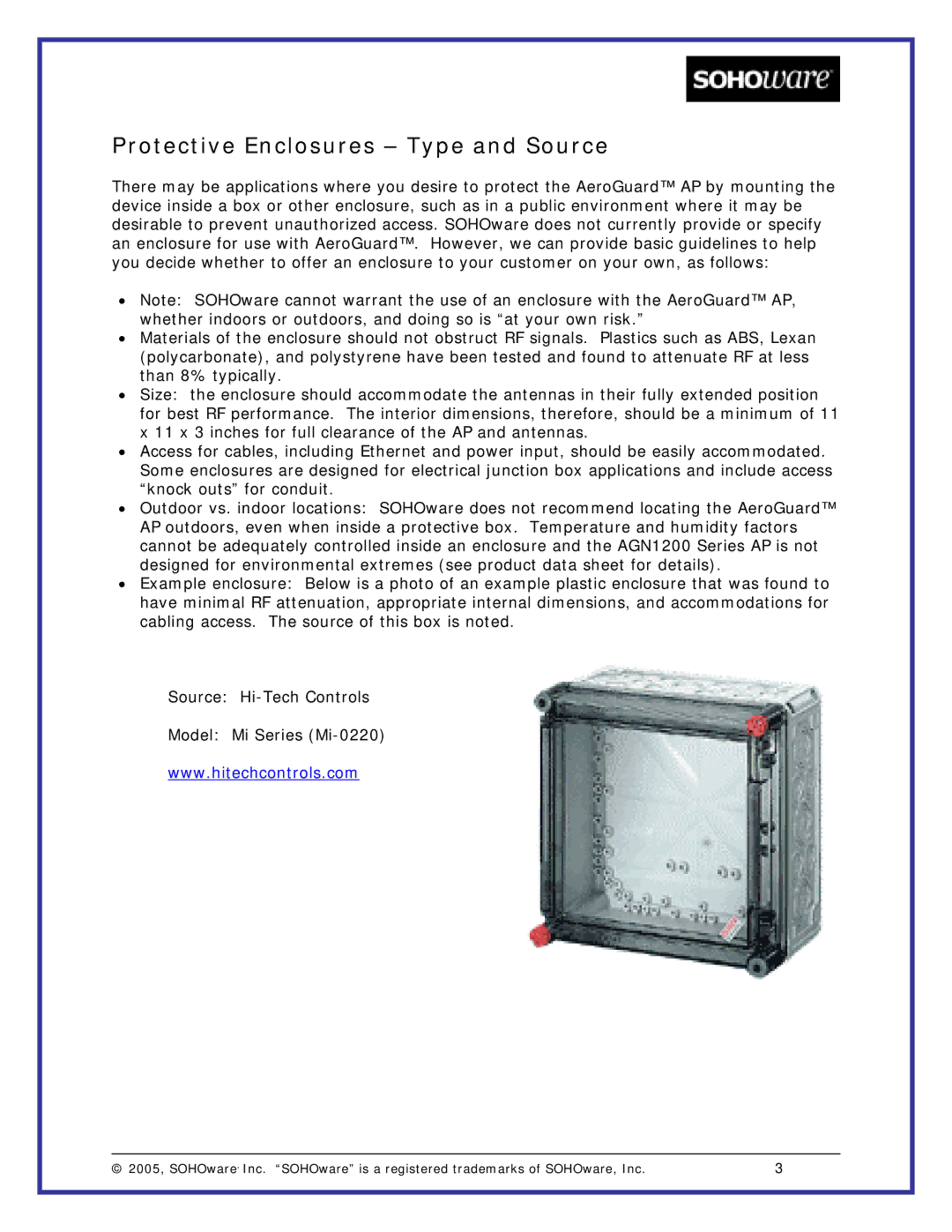
Protective Enclosures – Type and Source
There may be applications where you desire to protect the AeroGuard™ AP by mounting the device inside a box or other enclosure, such as in a public environment where it may be desirable to prevent unauthorized access. SOHOware does not currently provide or specify an enclosure for use with AeroGuard™. However, we can provide basic guidelines to help you decide whether to offer an enclosure to your customer on your own, as follows:
•Note: SOHOware cannot warrant the use of an enclosure with the AeroGuard™ AP, whether indoors or outdoors, and doing so is “at your own risk.”
•Materials of the enclosure should not obstruct RF signals. Plastics such as ABS, Lexan (polycarbonate), and polystyrene have been tested and found to attenuate RF at less than 8% typically.
•Size: the enclosure should accommodate the antennas in their fully extended position for best RF performance. The interior dimensions, therefore, should be a minimum of 11 x 11 x 3 inches for full clearance of the AP and antennas.
•Access for cables, including Ethernet and power input, should be easily accommodated. Some enclosures are designed for electrical junction box applications and include access “knock outs” for conduit.
•Outdoor vs. indoor locations: SOHOware does not recommend locating the AeroGuard™ AP outdoors, even when inside a protective box. Temperature and humidity factors cannot be adequately controlled inside an enclosure and the AGN1200 Series AP is not designed for environmental extremes (see product data sheet for details).
•Example enclosure: Below is a photo of an example plastic enclosure that was found to have minimal RF attenuation, appropriate internal dimensions, and accommodations for cabling access. The source of this box is noted.
Source:
Model: Mi Series
www.hitechcontrols.com
© 2005, SOHOware, Inc. “SOHOware” is a registered trademarks of SOHOware, Inc. | 3 |
